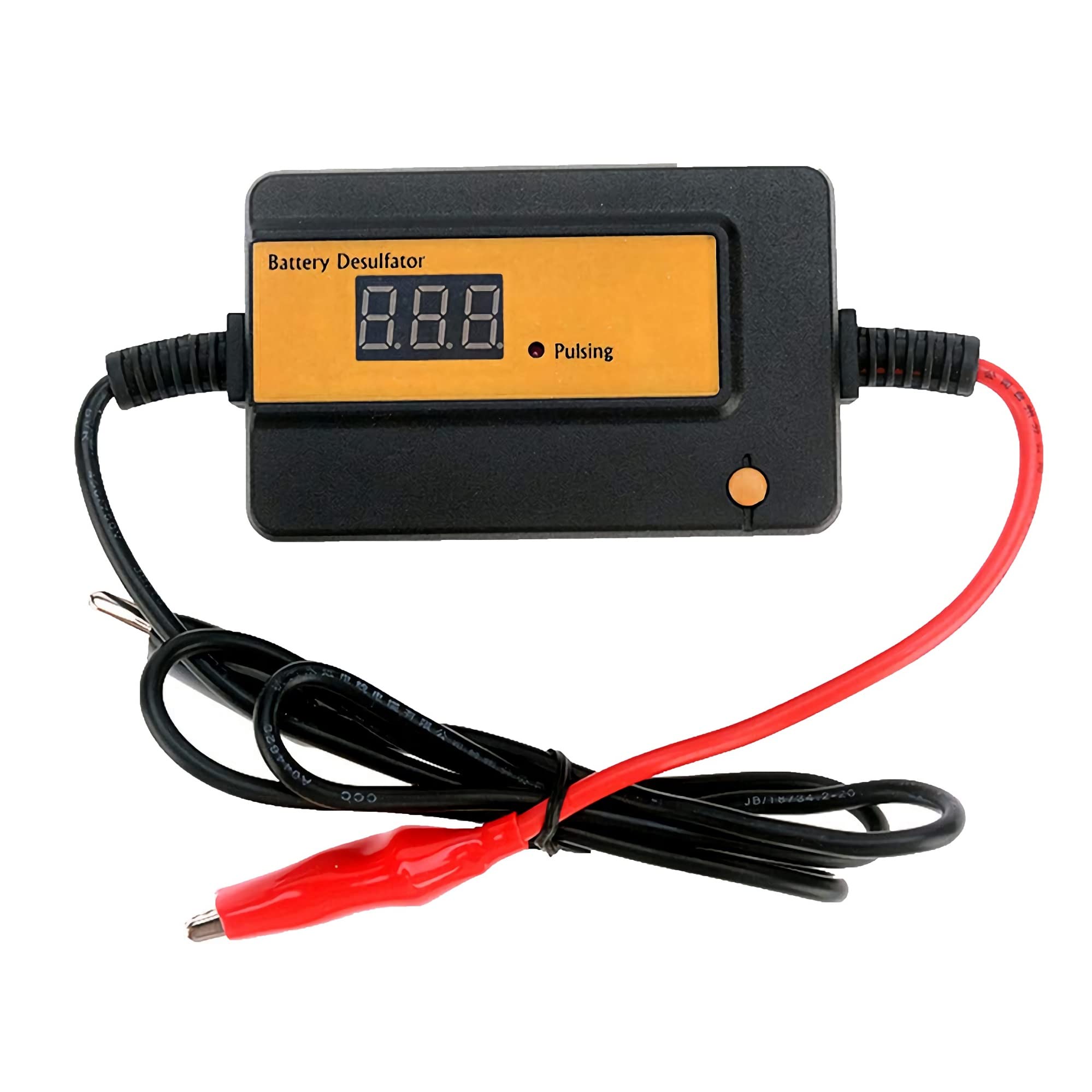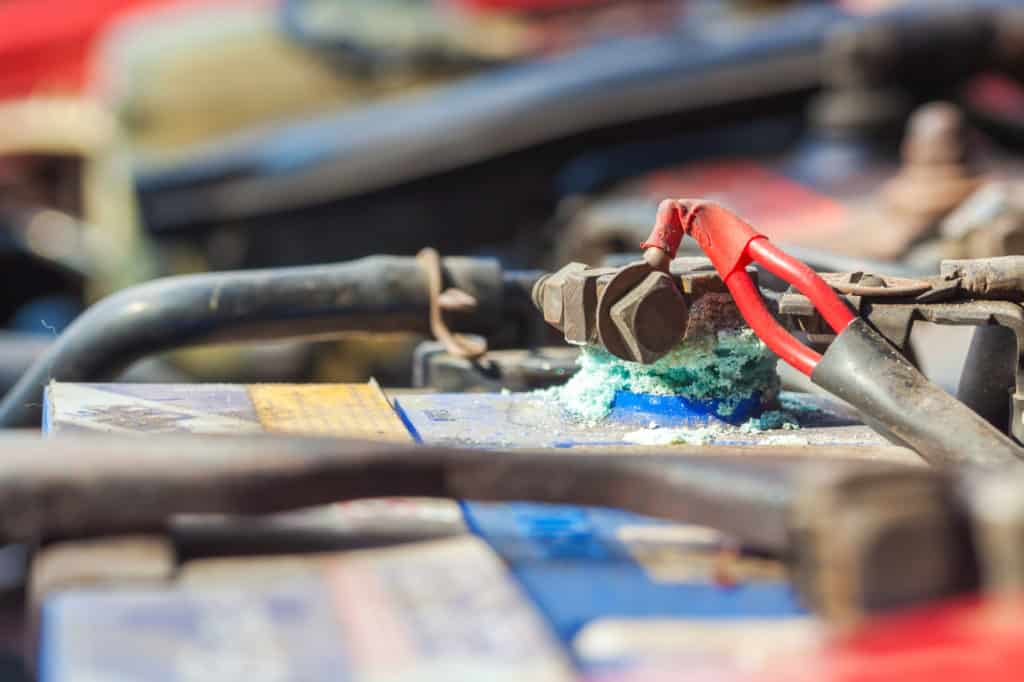How To Desulfate Golf Cart Batteries

Golf carts have become a popular mode of transportation on the greens, providing a convenient and eco-friendly way to navigate the golf course. These carts rely on batteries as their power source, but over time, these batteries can suffer from a common issue known as sulfation. Sulfation occurs when sulfate crystals build up on the battery plates, leading to reduced capacity, diminished performance, and shorter battery life.
Fortunately, there is a solution: desulfation. Desulfating golf cart batteries is a process that can help restore their performance and extend their lifespan. By addressing sulfation, golf cart owners can save money on battery replacements and ensure their carts continue to operate at peak efficiency.
In this comprehensive guide, we will explore various desulfation methods and techniques to effectively revive golf cart batteries. From understanding the different types of golf cart batteries to evaluating chemical desulfation and pulse desulfation methods, we’ll provide step-by-step instructions and essential tips for successful desulfation.
Whether you’re a golf enthusiast or a golf cart owner, mastering the art of desulfation will empower you to maintain optimal battery health and enjoy extended hours on the course. Let’s dive in and discover how to desulfate golf cart batteries for enhanced performance and longevity.

Understanding Golf Cart Batteries
Before delving into the desulfation process, it’s crucial to have a solid understanding of golf cart batteries and how they function. Golf cart batteries primarily fall into three categories: flooded lead-acid batteries, AGM batteries, and lithium-ion batteries (though the latter is less common in golf cart applications). Each type has its unique characteristics and maintenance requirements.
Flooded lead-acid batteries, also known as wet cell batteries, consist of lead plates submerged in a sulfuric acid electrolyte solution. AGM batteries, on the other hand, use a fiberglass mat soaked in electrolyte, offering enhanced vibration resistance and spill-proof operation. It’s important to identify the specific type of battery in your golf cart to determine the most suitable desulfation method.
Battery composition and operation play a significant role in understanding sulfation. Lead plates within the battery interact with the sulfuric acid electrolyte during charging and discharging cycles. Over time, sulfate crystals form on the plates, inhibiting the chemical reactions and reducing the battery’s overall capacity. Recognizing the symptoms of sulfation, such as reduced runtime and diminished power output, will help you diagnose and address battery issues promptly.
Evaluating Battery Desulfation Methods
Several methods are available for desulfating golf cart batteries, ranging from chemical desulfators to pulse desulfation techniques. Understanding the pros and cons of each approach will enable you to make an informed decision regarding the most suitable desulfation method for your batteries.
Chemical Desulfators
Chemical desulfation involves the use of additives or treatment solutions specifically designed to dissolve sulfate crystals and restore battery performance. These additives work by breaking down the sulfation buildup and improving the electrolyte’s conductivity. Chemical desulfators are available in the form of liquids or tablets, and they are generally easy to use.
One popular chemical desulfator product is Battery De-Sulfator, which utilizes a proprietary formula to dissolve sulfate crystals and rejuvenate the battery. Another well-known option is the Battery Equalizer, which balances the voltage and extends battery life. While chemical desulfators can be effective, it’s important to note that they may not be suitable for all battery types, and the results can vary depending on the severity of sulfation.
Pulse Desulfation
Pulse desulfation, also known as electronic or high-frequency desulfation, utilizes electronic devices to send high-frequency pulses of energy through the battery. These pulses help break down the sulfate crystals and restore the battery’s capacity. Pulse desulfation devices typically connect to the battery during the charging process, allowing the pulses to work alongside the charging current.
One popular pulse desulfator is the BatteryMINDer, which provides high-frequency pulses to remove sulfation and maintain battery health. Another option is the PulseTech XC100-P Xtreme Charger, designed to recover and maintain batteries by dissolving sulfation and preventing future buildup. Pulse desulfation is generally suitable for both flooded lead-acid batteries and AGM batteries, offering a versatile desulfation method for golf cart owners.
Preparing for Battery Desulfation
Before initiating the desulfation process, it’s essential to take necessary precautions and gather the required tools and materials. Ensuring safety and having the proper equipment will contribute to a smooth and secure desulfation process.
Safety Precautions
Desulfating golf cart batteries involves working with potentially hazardous materials and electrical components. To ensure your safety, follow these important safety precautions:
- Wear Protective Gear: Put on safety glasses and gloves to protect your eyes and hands from acid spills and corrosive materials.
- Work in a Well-Ventilated Area: Perform the desulfation process in a space with proper ventilation to avoid inhaling potentially harmful fumes.
- Handle Batteries Properly: Always exercise caution when handling batteries. Ensure the battery terminals are clean and free of corrosion, and avoid any direct contact with your skin.
Tools and Materials Needed
To prepare for the desulfation process, gather the following tools and materials:
- Battery Charger: Use a quality battery charger capable of delivering an appropriate charging current for your golf cart batteries. Select a charger with desulfation or maintenance mode, if available.
- Multimeter: A multimeter will help you measure the battery voltage and determine its current state of charge.
- Distilled Water: Have distilled water on hand for battery maintenance, including replenishing electrolyte levels, if necessary.
- Baking Soda: Baking soda is useful for neutralizing acid spills or cleaning battery terminals and cables.
- Safety Glasses and Gloves: Wear safety glasses and gloves to protect yourself during the desulfation process.
By taking these safety precautions and having the necessary tools and materials readily available, you’ll be well-prepared to desulfate your golf cart batteries effectively.
Steps to Desulfate Golf Cart Batteries
Now that you’re familiar with the basics of golf cart batteries and the different desulfation methods, let’s dive into the step-by-step process of desulfating your batteries. Following these instructions carefully will help you achieve the best possible results.
Step 1: Battery Inspection
Before proceeding with desulfation, perform a thorough inspection of your batteries. Check for any physical damage, such as cracks or leaks in the battery casing. Additionally, measure the battery voltage using a multimeter to assess its current state of charge. This will give you a baseline for evaluating the effectiveness of the desulfation process later on.
Step 2: Cleaning the Battery
Cleanliness is crucial for battery performance and longevity. Start by removing any corrosion or dirt from the battery terminals and cables. Use a mixture of baking soda and water to create a paste, and apply it to the affected areas. Scrub the terminals and cables with a wire brush or a battery cleaning tool to remove the buildup. Rinse with water and wipe dry.
If you encounter any acid spills during the cleaning process, neutralize them with a baking soda-water solution. Sprinkle baking soda generously over the spilled acid, and then pour water to dilute and neutralize the acid. Be sure to dispose of the neutralized mixture properly.
Step 3: Charging the Battery
Before desulfation, ensure your battery is fully charged. Connect the battery charger to the battery according to the manufacturer’s instructions. Select the appropriate charging mode for your battery type, such as regular charge or maintenance mode. Allow the battery to charge fully until it reaches its recommended voltage.
Charging the battery helps prepare it for the desulfation process by optimizing the chemical reactions within the battery cells. It also ensures the battery has sufficient energy to undergo desulfation effectively.
Step 4: Desulfation Process
Now that your battery is fully charged, you can proceed with the desulfation process. Depending on the desulfation method you’ve chosen, follow the instructions specific to that method. Here, we’ll explore two common desulfation techniques
that you can implement: chemical desulfation and pulse desulfation.
Chemical Desulfation
If you opt for chemical desulfation, carefully follow the instructions provided with the desulfator product you’re using. Typically, you’ll need to add the recommended amount of desulfator additive or treatment solution to each battery cell. This additive will work to dissolve the sulfate crystals and improve the battery’s overall performance.
Ensure that you distribute the additive evenly among the cells, and avoid overfilling. Once you’ve added the desulfator, allow it to circulate within the battery by gently rocking the battery back and forth or using a battery shaker. This movement helps the desulfator reach all areas of the battery plates.
Let the chemical desulfator sit in the battery for the recommended period. This timeframe can vary depending on the product and the severity of sulfation. After the designated time has elapsed, proceed to the next step of the desulfation process.
Pulse Desulfation
For pulse desulfation, connect the pulse desulfation device to the battery according to the manufacturer’s instructions. Typically, you’ll attach the device in parallel with the battery charger. This setup allows the device to send high-frequency pulses of energy through the battery while it charges.
Set the pulse desulfation device to the recommended frequency and let it operate throughout the charging process. The pulses will help break down the sulfate crystals on the battery plates, improving the overall capacity and performance.
Note that pulse desulfation is an ongoing maintenance technique that can be used periodically to prevent future sulfation buildup. It’s a good practice to include pulse desulfation in your regular battery maintenance routine to maximize battery lifespan.
Step 5: Finalizing the Process
Once the desulfation process is complete, it’s essential to perform a final evaluation of the battery’s voltage and specific gravity. Use a multimeter to measure the battery voltage and ensure it has reached the desired level. Additionally, check the specific gravity of the electrolyte using a hydrometer. These measurements will help you assess the effectiveness of the desulfation process and determine whether further action is required.
If the battery’s voltage and specific gravity have significantly improved, you can proceed to reinstall the battery in your golf cart. However, if the improvements are minimal or the battery still exhibits signs of sulfation, you may consider repeating the desulfation process or exploring other options such as professional battery reconditioning or replacement.
Maintaining Desulfated Batteries
Once you’ve successfully desulfated your golf cart batteries, it’s crucial to implement proper maintenance practices to prolong their lifespan and optimize their performance. Here are some essential tips for maintaining desulfated batteries:
Regular Battery Maintenance
Regular battery maintenance plays a significant role in maximizing battery performance and longevity. Consider the following practices:
- Charging Schedule and Depth of Discharge: Follow a regular charging schedule and avoid deep discharges whenever possible. Regularly recharge the battery after each use or at least once every few weeks during periods of inactivity.
- Keeping the Batteries Clean and Dry: Clean the battery terminals and cables regularly to prevent corrosion. Ensure they are dry before reconnecting them to the battery to avoid electrical issues.
- Avoiding Overcharging or Undercharging: Monitor the charging process carefully to prevent overcharging, which can lead to battery damage, or undercharging, which can contribute to sulfation. Utilize chargers with built-in monitoring features or invest in a battery maintenance system that provides optimal charging control.
Monitoring Battery Performance
To ensure your desulfated batteries continue to perform optimally, it’s important to monitor their performance regularly. Implement the following practices:
- Periodic Voltage and Specific Gravity Checks: Regularly measure the battery’s voltage and specific gravity using a multimeter and hydrometer, respectively. These measurements provide valuable information about the battery’s state of charge and overall health. If you notice any significant deviations or a decline in performance, it may indicate the onset of sulfation or other issues that require attention.
- Addressing Any New Sulfation Signs: Keep an eye out for any signs of sulfation recurrence, such as reduced runtime, sluggish performance, or difficulty holding a charge. If you notice these symptoms, consider implementing desulfation techniques again or seeking professional assistance for battery reconditioning if necessary.
Extending Battery Lifespan
To further extend the lifespan of your desulfated batteries, consider the following tips:
- Proper Storage during Off-Season: If you store your golf cart batteries during the off-season, ensure they are stored in a cool, dry location. Ideally, batteries should be stored in a partially charged state (around 50% charge) to minimize self-discharge and sulfation. Follow the manufacturer’s guidelines for long-term storage to maintain battery health.
- Avoiding Deep Discharges: Minimize deep discharges whenever possible, as they can accelerate sulfation and decrease battery lifespan. Avoid running the batteries to extremely low voltage levels, and recharge them promptly after each use or at regular intervals to maintain optimal charge levels.
By following these maintenance practices, you can maximize the lifespan and performance of your desulfated golf cart batteries, ensuring they provide reliable power for your golfing adventures.
Upgrading to Desulfation-Friendly Batteries
While desulfation can be an effective method to revitalize golf cart batteries, it’s worth considering the option of upgrading to desulfation-friendly batteries. Some battery manufacturers offer models specifically designed to resist sulfation and enhance battery longevity.
When considering an upgrade, carefully evaluate the features and benefits of desulfation-friendly batteries. Look for models that incorporate advanced technologies or additives aimed at minimizing sulfation buildup. Additionally, consider factors such as battery capacity, cycle life, and compatibility with your golf cart’s electrical system.
However, it’s important to weigh the costs and benefits of upgrading against the potential lifespan extension. If your current batteries are relatively new or the sulfation is not severe, desulfation methods may still provide satisfactory results without the need for immediate replacement.
Conclusion
Maintaining the health and performance of your golf cart batteries is essential for an enjoyable and uninterrupted golfing experience. Desulfation is a valuable technique that can help extend the lifespan of your batteries and restore their capacity. By understanding the underlying principles, evaluating desulfation methods, and following the step-by-step process outlined in this guide, you can effectively desulfate your golf cart batteries and keep them in optimal condition.
Remember to prioritize safety precautions, choose the desulfation method that best suits your battery type, and maintain regular battery maintenance practices to ensure long-lasting performance. With proper care and attention, your desulfated golf cart batteries will provide reliable power and enhance your enjoyment on the golf course for years to come.






